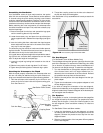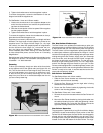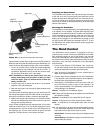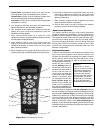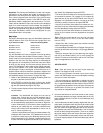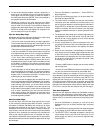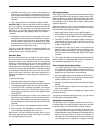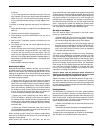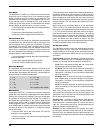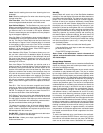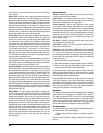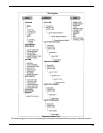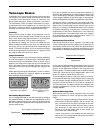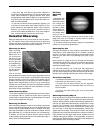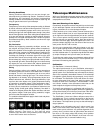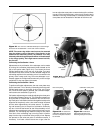
14
Tour Mode
The StarSeeker includes a tour feature which automatically
allows the user to choose from a list of interesting objects
based on the date and time in which you are observing. The
automatic tour will display only those objects that are with-
in your set filter limits. To activate the Tour mode, press the
TOUR key on the hand control. The StarSeeker will display
the best objects to observe that are currently in the sky.
• To see information and data about the displayed object,
press the INFO key.
• To slew to the object displayed, press ENTER.
• To see the next tour object, press the Down key.
Constellation Tour
In addition to the Tour Mode, the StarSeeker telescope has
a Constellation Tour that allows the user to take a tour of all
the best objects within a particular constellation. Selecting
Constellation from the LIST menu will display all the constel-
lation names that are above the user defined horizon (filter
limits). Once a constellation is selected, you can choose from
any of the database object catalogs to produce a list of all the
available objects in that constellation.
• To see information and data about the displayed object,
press the INFO key.
• To slew to the object displayed, press ENTER.
• To see the next tour object, press the Up key.
Direction Buttons
The StarSeeker has four direction buttons in the center of the
hand control which controls the telescope motion in altitude
(up and down) and azimuth (left and right). The telescope can
be controlled at nine different speed rates.
Rate Button
Pressing the RATE key (11) allows you to instantly change the
speed rate of the motors from high speed slew rate to precise
guiding rate or anywhere in between. Each rate corresponds
to a number on the hand controller key pad. The number 9 is
the fastest rate (approximately 4° per second, depending on
power source) and is used for slewing between objects and
locating alignment stars. The number 1 on the hand control
is the slowest rate (2x sidereal) and can be used for accurate
centering of objects in the eyepiece. To change the speed
rate of the motors:
• Press the RATE key on the hand control. The LCD will
display the current speed rate.
• Press the number on the hand control that corresponds
to the desired speed.
The hand control has a “double button” feature that allows you
to instantly speed up the motors without having to choose a
speed rate. To use this feature, simply press the arrow button
that corresponds to the direction that you want to move the
telescope. While holding that button down, press the opposite
directional button. This will increase the speed to the maxi-
mum slew rate.
When using the Up and Down buttons on the StarSeeker
70mm or 80mm, the slower slew rates (6 and lower) move
the motors in the opposite direction than the faster slew rates
(7- 9). This is done so that an object will move in the appro-
priate direction when looking into the eyepiece (i.e. pressing
the up arrow button will move the star upwards in the field of
view of the eyepiece). However, if any of the slower slew rates
(rate 6 and below) are used to center an object in the Star
Pointer, you may need to press the opposite directional button
to make the telescope move in the correct direction.
Set Up Procedures
The StarSeeker contains many user defined setup functions
designed to give the user control over the telescope’s many
advanced features. All of the set up and utility features can be
accessed by pressing the MENU key and scrolling through
the options:
Tracking Mode-Once the StarSeeker is aligned the tracking
motors will automatically turn on and begin tracking the sky.
However, the tracking can be turned off for terrestrial use:
Alt-Az This is the default tracking rate and is used when
the telescope has been properly aligned.
EQ North Used to track the sky when the telescope is
polar aligned using an equatorial wedge in the Northern
Hemisphere. This option is not used with the StarSeeker
series of telescopes.
EQ South Used to track the sky when the telescope is
polar aligned using an equatorial wedge in the Southern
Hemisphere. This option is not used with the StarSeeker
series of telescopes.
Off When using the telescope for terrestrial (land) obser-
vation the tracking can be turned off so that the telescope
never moves.
Note: The EQ North and EQ South tracking modes are
only needed with telescopes that can be polar aligned. The
StarSeeker’s are exclusively Alt-Az mounted telescopes and
do not require equatorial tracking.
Tracking Rate - In addition to being able to move the tele-
scope with the hand control buttons, the StarSeeker will
continually track a celestial object as it moves across the
night sky. The tracking rate can be changed depending on
what type of object is being observed:
Sidereal This rate compensates for the rotation of the earth
by moving the telescope at the same rate as the rotation of
the earth, but in the opposite direction. When tracking in Alt-
Az mode, the telescope must make corrections in both altitude
and azimuth.
1 = 2x
2 = 4x
3 = 8x
4 = 16x
5 = 32x
6 = .5° / sec
7 = 1° / sec
8 = 2° / sec
9 = 4° / sec
Nine available slew speeds



